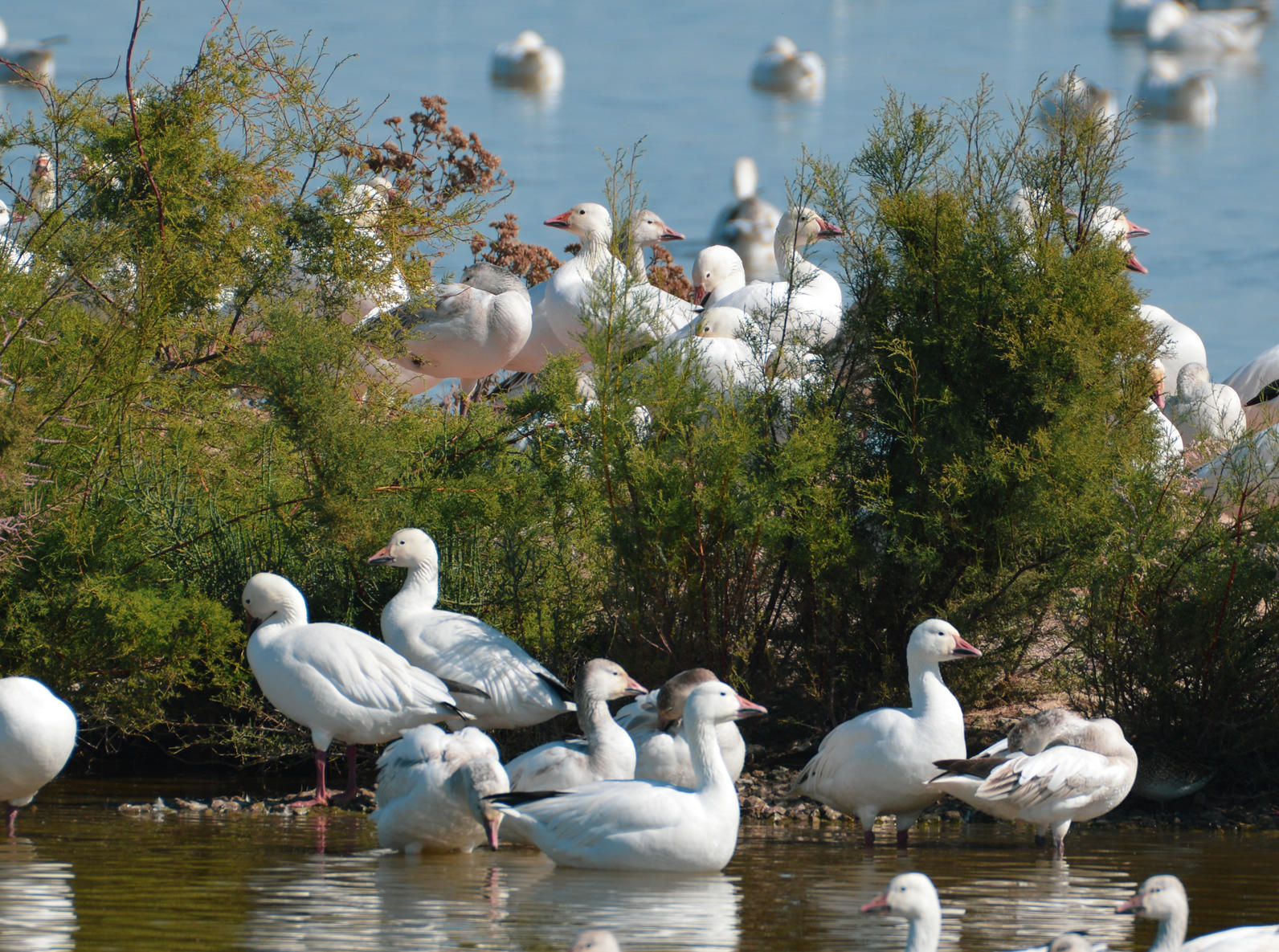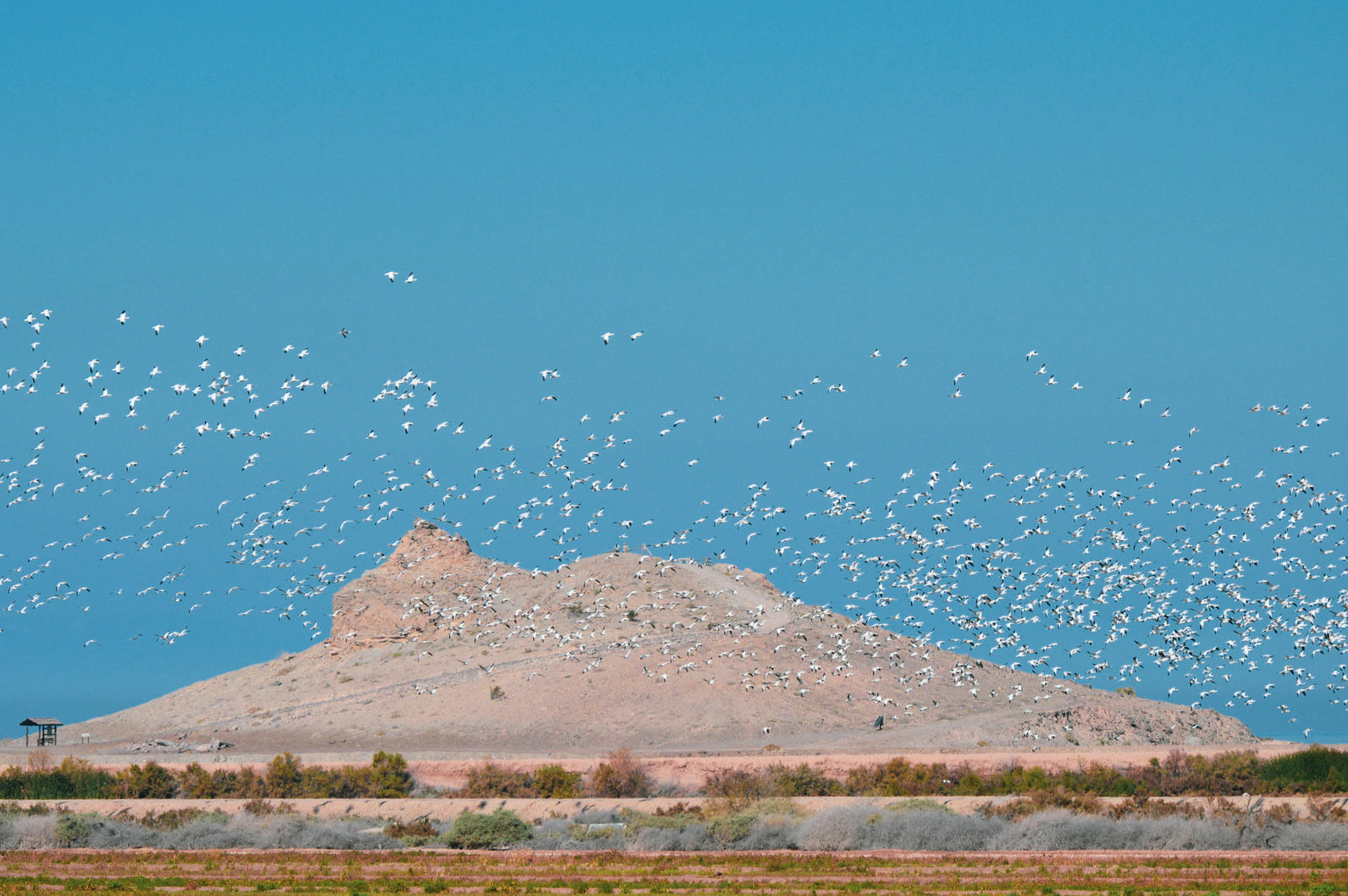With the variety of bird species exceeding 400, performing monthly bird surveys at California’s largest body of water is no small task. Luckily, Audubon collaborates with a wide and expanding network of folks working at the Salton Sea during this critical moment in its history, including community-based organizations, non-governmental organizations, state and federal agencies, and volunteers.
Together we are gaining a better understanding on just how the increasing vulnerability of this important Pacific Flyway site is impacting the very wildlife that depends on it during their yearly migrations.
Last week, we went down with Camila Bautista and Hunter Harger, our two Salton Sea interns, to the Sonny Bono Refuge to chat with Razia Shafique-Sabir, one of the wildlife biologists supporting Audubon in our bird surveying efforts.

We met with Razia on the lookout deck at the Refuge, which provides a gorgeous view of a sprawling, grassy field that attracts a number of bird species, including Snow Goose, Cattle Egret, and Sandhill Crane, and behind it, Rock Hill, one of the several volcanic domes, called the Salton Buttes, that flank the southern edge of the Sea.
We asked Razia a few questions about her experiences working in natural protected areas around the US and about her point of view on Salton Sea management.
Hunter: Tell us a little about yourself.
Razia: Well, I’m a wildlife biologist from Houston Texas, and I’ve just started working here at the Sonny Bono Refuge about half a year ago. I’m with here with the US Fish & Wildlife Service (USFWS), but before this I worked for the National Park Service (NPS) for 5 years.
Camila: What’s the biggest difference between the USFWS and the Parks Service?
Razia: The mission of NPS is a little bit different than USFWS. So, the Park Service’s goal is to preserve natural resources for the enjoyment, education, and inspiration of people, while with USFWS it’s about maintaining and protecting species, providing them with habitat, with a safe haven, as you can see here.
(in this moment, a flock of about one thousand Snow Geese all launched into the sky, spooked by a low-flying airplane, before settling again a few minutes later)

Razia: Beautiful. In August we also can see something like 200-300 American White Pelican flying over the Refuge looking for food and freshwater.
Hunter: Do you feel more challenged in a place like this, as opposed to the Park Service?
Razia: Well, you know, in the Park Service, as a biotech, you are working mainly on one species, on one area, or on one thing. For example, when I was working at Padre Island National Seashore in Texas, I focused on Kemp’s Ridley Sea Turtle (the rarest species of sea turtle on earth), whereas here at the Refuge, there are 450-ish species of birds and mammals, and we get to work with all of them, which is great. I also get to do habitat work here, plus interact with our partners and volunteers, which is really fun.
Camila: What kind of questions do you think you get most from visitors?
Razia: Definitely about the Sea. We get a lot of questions about the water levels, about how the birds are doing, etc. It’s great that people are so interested, because after all, if you’re not asking questions, you’re not learning.
Hunter: Does anyone ask you about your hopes for the future of the Sea?
Razia: (Laughs) You know, there are so many people with their own hopes and views about this place that it’s interesting just learning about what they want. I also just moved here, so I don’t think it’s fair for me to come over here and say, ‘this is the right or wrong way to manage the Sea.’ I like to hear about the community members’ hopes and dreams.
We do have our Red Hill Bay restoration project going on here, so people are very interested in that as well.
Camila: You’ve worked at natural protected shorelines across the country, from Michigan to Texas, North Carolina to Utah/Arizona, and now California. Are there any undercurrents that you’ve observed over the years with respect to wildlife and shoreline habitats?
Razia: I’ve been seeing a lot of habitat change, which is expected. We’ve also seen a lot of great recovery efforts happening in a lot of places. When we were first starting on the recovery of the Piping Plovers at Sleeping Bear Dunes National Lakeshore, there were only 12 breeding pairs. Now we have about 200 individuals, so that’s a lot.
Even though we get caught up in the more sensational stories about habitat loss, the efforts that I’ve seen give me a lot of hope. As long as there are people who are passionate and working toward habitat restoration and wildlife research, we can definitely make a difference.
See more pictures on our Instagram @audubon_saltonsea
Audubon California will be performing its February bird survey at the Salton Sea on Friday, February 21. If you are in the area and would like to join, please email saltonsea@audubon.org





